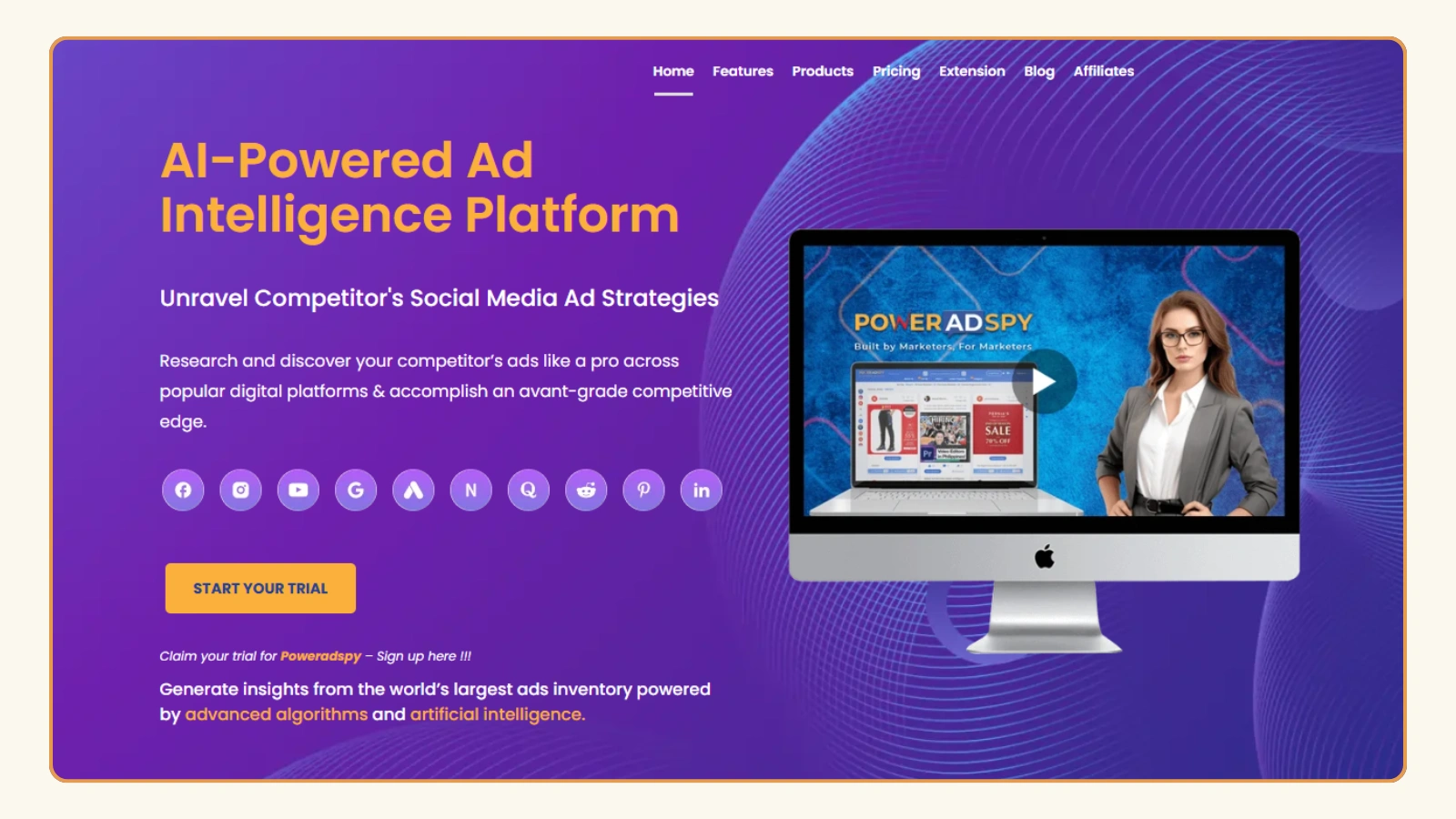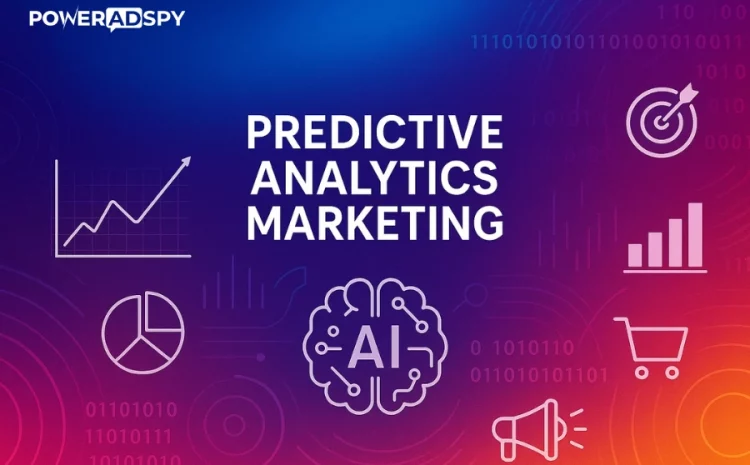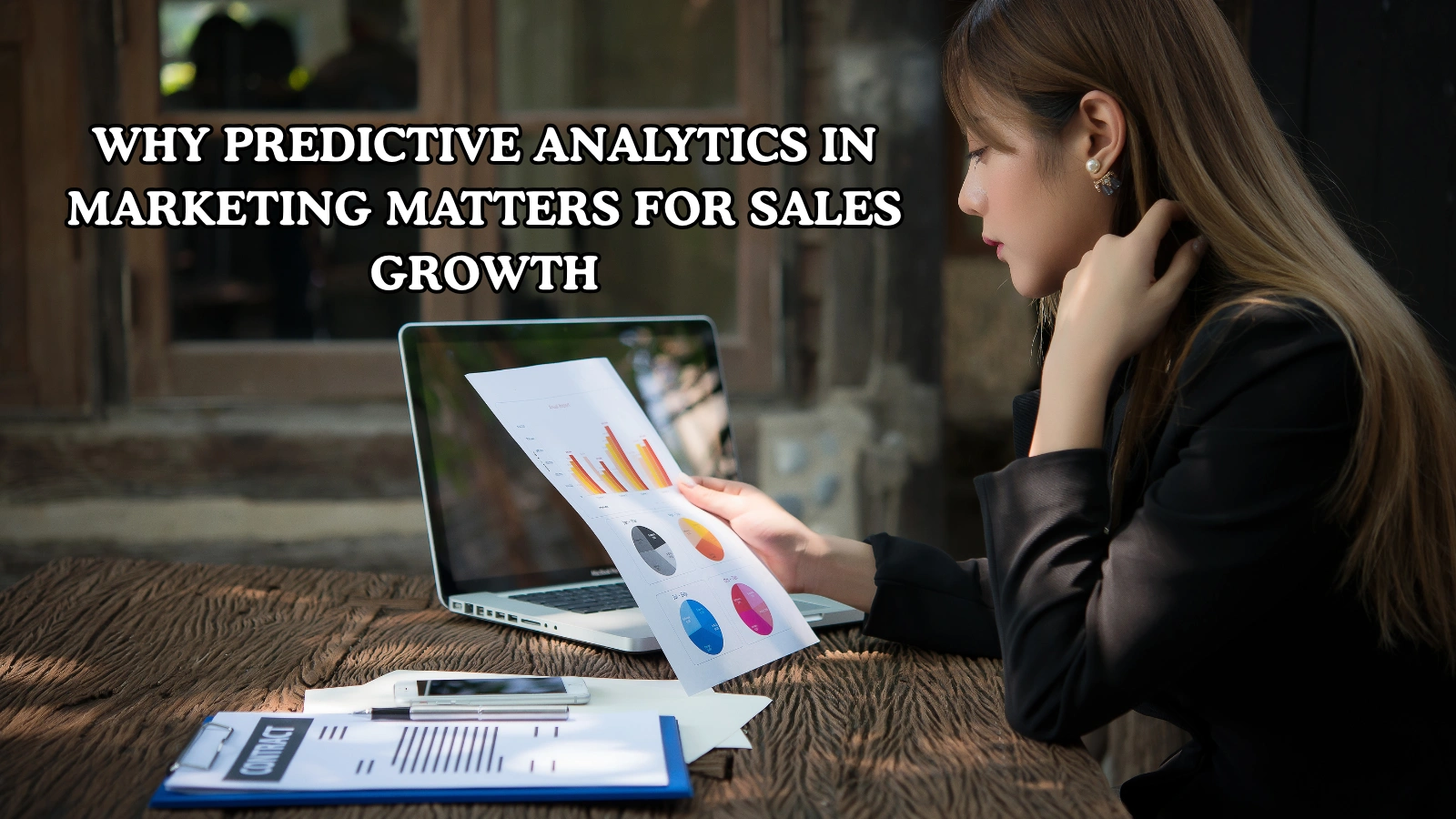How To Use Predictive Analytics Marketing To Boost Sales?
Sales growth depends on how well a business understands its audience. Data has become the backbone of every marketing decision. Instead of relying only on past results, brands now use predictive analytics marketing to plan with greater accuracy. By studying customer behavior, purchase history, and engagement, businesses can predict what buyers are most likely to do next. This insight helps companies create more focused campaigns, deliver personalized experiences, and improve overall sales performance.
In this blog, we will explore what predictive analytics in marketing is, why it matters, how you can apply it in your strategy, and how a powerful tool like PowerAdSpy can give you competitive insights to strengthen your campaigns.
Listen To The Podcast Now!
What Is Predictive Analytics In Marketing?
The question many marketers ask is: What is predictive analytics in marketing? It is the practice of analyzing historical customer data to forecast future behavior. Rather than only looking at past actions, predictive marketing analytics studies patterns to determine what steps buyers will take next.
For example, if customers usually purchase a product after signing up for a newsletter, predictive analytics for marketing can forecast conversion rates and help create campaigns that encourage similar behavior.
By applying predictive analytics marketing methods, brands no longer need to guess. Instead, they can use data models, machine learning, and trend analysis to shape their marketing messages and promotions with accuracy.
Why Predictive Analytics In Marketing Matters For Sales Growth?
Sales teams often face the challenge of targeting the right customers at the right time. With predictive analytics in marketing, businesses can address this problem with confidence.
Identify High-Value Customers
It gives you the ability to spot high-value buyers who are most likely to purchase or re-purchase. By analyzing purchase history and engagement it ensures you focus only on customers who have a stronger chance of converting. This not only improves your sales pipeline but also saves time and resources.
Reduce Wasted Ad Spend
One of the biggest strengths of predictive analytics marketing is its ability to cut down wasted ad spend. By targeting only those audiences who show clear buying intent, it ensures your budget goes toward the right channels. As a result, every campaign drives better ROI without unnecessary costs.
Personalize Offers
With analytics marketing, businesses can design highly personalized campaigns that match customer needs. When companies use analytics marketing insights, they create offers that resonate with specific audience segments. This level of personalization builds loyalty, increases engagement, and boosts sales conversions.
Improve Sales Forecasting
Forecasting revenue becomes much easier with predictive analytics marketing. By studying patterns in customer behavior helps businesses plan demand, manage inventory, and estimate sales with accuracy. This prepares sales teams for seasonal spikes and long-term growth opportunities.
By using predictive analytics for marketing, businesses align strategies with customer needs, leading to higher conversions and sustainable growth.
Read More!
How To Build Successful AI Marketing Campaigns?
10 Amazing B2B SaaS Marketing Strategy To Grow Your Business
Predictive Analytics Marketing Strategy: Where To Begin
Crafting a marketing strategy requires a structured approach. You cannot jump directly into predictions without proper groundwork.
Collect The Right Data
The foundation of marketing lies in accurate data collection. Businesses must track user behavior, purchase history, demographics, and engagement metrics to identify buying signals. With predictive analytics marketing, cleaner and more detailed data ensures precise forecasts that directly improve campaign outcomes.
Segment Your Audience
Not every customer behaves the same, which is why segmentation is essential. It allows you to divide buyers into groups based on shared interests, purchase frequency, or intent. By applying predictive analytics to these segments, you create personalized campaigns that match their needs.
Choose The Right Tools
A successful predictive analytics marketing strategy requires reliable software and platforms that handle big data. The right tools empower businesses to process information quickly and generate actionable insights. With analytics marketing software in place, teams can move from raw data to practical results with ease.
Create Models
Data becomes powerful when you build accurate models. It uses regression, decision trees, and machine learning models to anticipate customer behavior. By applying predictive analytics models to your data, you can forecast demand, identify high-value leads, and optimize resource allocation.
Apply Insights To Campaigns
Predictions are valuable only when applied in real campaigns. It helps businesses guide email campaigns, ad placements, and promotional strategies with confidence. By using analytics marketing insights in your outreach, you reach the right audience at the right time.
Measure Results
No strategy works perfectly without testing and adjustments. It emphasizes constant measurement of campaign outcomes against forecasts. By reviewing its performance, teams refine models and improve accuracy for long-term growth.
Starting with a clear plan ensures predictive analytics marketing produces measurable improvements in sales.
Predictive Analytics Marketing Examples You Should Know
Practical examples make the concept easier to understand. Here are a few common marketing examples used by top brands:
E-commerce Recommendations
Online stores like Amazon thrive on analytics marketing to recommend products that customers are most likely to buy. By studying browsing history and past purchases, it allows e-commerce businesses to increase average order value and improve customer satisfaction. These personalized recommendations drive repeat purchases and long-term loyalty.
Churn Prediction
Telecom companies and subscription services rely on analytics marketing to identify customers at risk of leaving. Detecting early warning signals, such as reduced usage or complaints, helps brands create targeted retention offers. This proactive approach reduces churn rates and protects long-term revenue.
Email Targeting
Retailers use predictive analytics marketing to send personalized emails at the right time. Predicting when a customer is most likely to open and act ensures higher engagement and conversion rates. This makes email campaigns more cost-effective and builds stronger connections with buyers.
Lead Scoring
B2B companies benefit from predictive marketing by assigning scores to prospects based on their actions and engagement levels. It highlights the leads most likely to convert, allowing sales teams to focus on the right opportunities. This improves productivity, shortens sales cycles, and boosts overall revenue.
These marketing examples prove that businesses across industries can benefit by forecasting behavior and taking action at the right time.
How Does PowerAdSpy Strengthen Your Ad Intelligence?
While predictive marketing helps forecast customer behavior, having competitive ad intelligence makes those predictions even stronger. This is where PowerAdSpy comes in. It is an advanced ad intelligence platform that provides complete visibility into competitor campaigns, giving marketers the insights they need to design smarter strategies.
Key Features of PowerAdSpy That Support Predictive Analytics Marketing
Filter By Ad Positions
PowerAdSpy lets you filter ads based on positions like News Feed or Side Location. By combining this with marketing, you can test which placements bring the highest conversions in your niche. This ensures predictive analytics marketing decisions are supported by real-world ad performance data.
Complete Visibility
The platform allows you to visit live ad posts directly from within PowerAdSpy. With analytics marketing, this visibility helps cross-check engagement levels and customer reactions in real time. Marketers can validate predictions with actual results before launching campaigns.
Massive Ad Data
PowerAdSpy stores millions of ads from over 100+ countries, with thousands added daily. When paired with marketing, this global dataset offers valuable insights into trends that influence buyer behavior. Businesses can use predictive analytics marketing models to spot patterns across regions and industries.
Narrow Down Searches
With the ability to filter by niche keywords, advertisers, or domains, PowerAdSpy makes research faster and more accurate. This complements marketing by showing which competitors’ campaigns align with predicted customer actions. Together, they help refine ad strategies for higher ROI.
Bookmark the Best Ads
Marketers can save top-performing ad concepts to a personal inventory for future campaigns. In marketing, this feature helps build a library of proven creatives to match customer forecasts. It ensures predictive analytics marketing strategies always draw from the most effective ad ideas.
Powerful Search Algorithm
The tool’s advanced search sorts ads by date, shares, likes, and comments. Marketing benefits from this by using the best-performing ads as a benchmark for future campaigns. This connection between ad intelligence and marketing strengthens targeting decisions.
Engagement Details
PowerAdSpy highlights which ads receive the most interaction in your niche. It uses these insights to identify what resonates with audiences and forecast which ad formats will drive conversions. Combining both ensures campaigns align with proven engagement triggers.
With these features, PowerAdSpy equips marketers to connect predictive analytics marketing with competitor insights. By combining predictive models with real ad intelligence, businesses create strategies that not only forecast customer behavior but also align with proven market results.
Building A Predictive Analytics Marketing Strategy For Your Business
Creating a strategy requires a clear structure that connects customer data, predictive models, and ad intelligence. Here’s a step-by-step approach to help your business maximize results:
- Define Clear Goals
Decide whether your focus is boosting conversions, reducing customer churn, improving retention, or driving cross-sell opportunities. - Integrate Customer Data
Collect data from your CRM, social media, ad platforms, and web analytics to build a complete view of your customers. - Apply Predictive Models
Use the right models for your objective regression analysis, decision trees, or machine learning models work well depending on your data and goals. - Leverage Ad Intelligence Tools
Incorporate insights from platforms like PowerAdSpy to validate predictive insights against proven competitor campaigns. This ensures your strategy stays relevant and market-driven. - Personalize Campaigns
Deliver tailored offers and ads for different customer segments based on predictive signals, increasing engagement and conversions. - Track, Test, and Refine
Continuously measure campaign results, test variations, and update your predictive analytics marketing strategy to keep improving outcomes.
By combining predictive analytics with competitive ad intelligence, businesses can anticipate customer needs, design smarter campaigns, and stay ahead of the competition.
Future of Predictive Analytics in Marketing
The future of predictive analytics in marketing is set to transform how businesses understand and engage with customers. With rapid advancements in AI and machine learning, predictions will not only become more precise but also faster, enabling marketers to act in real time. Companies will soon predict not just what customers want, but also when and how they prefer to engage.
Key Trends to Watch:
- Hyper-Personalization
Campaigns will evolve into one-to-one experiences, powered by predictive models that adapt to each customer’s preferences. - Voice and Visual Data Predictions
Beyond clicks and text, predictive analytics will expand to interpret voice commands, video, and image interactions for richer insights. - Integration with Ad Intelligence
Platforms like PowerAdSpy will play a critical role by blending predictive analytics with real campaign performance data, giving businesses a sharper competitive edge. - Automated Optimization
Future marketing tools will self-adjust campaigns in real time, using predictive insights to continuously refine targeting and maximize ROI.
As these innovations mature, predictive analytics in marketing will shift from being a competitive advantage to becoming an absolute necessity for growth-driven businesses.
Conclusion
It has transformed the way businesses approach growth. Instead of working with uncertainty, brands can now predict customer actions, refine campaigns, and improve conversion rates with precision. From personalized offers to accurate forecasting, predictive marketing analytics has become the foundation of modern sales strategies.
By integrating tools like PowerAdSpy, businesses can combine predictive insights with competitive ad intelligence for even greater success. The ability to analyze millions of ads, identify winning patterns, and apply predictive models creates a powerful advantage.
Companies that invest in predictive analytics for marketing today will not only boost current sales but also secure long-term growth.
FAQs
Q1. What is predictive analytics in marketing?
Predictive analytics in marketing is the practice of using customer data, historical trends, and behavioral patterns to forecast future actions and optimize campaigns for better results.
Q2. How does predictive analytics marketing help sales?
It helps businesses identify high-value customers, improve targeting, reduce churn, and forecast revenue with greater accuracy, enabling sales teams to focus on the right opportunities.
Q3. Can small businesses use predictive marketing analytics?
Yes. Small businesses can leverage predictive analytics tools to personalize campaigns, improve customer engagement, and boost sales without needing enterprise-level budgets.
Q4. What are some predictive analytics marketing examples?
Common examples include e-commerce product recommendations, churn prediction, personalized email targeting, and lead scoring models.
Q5. How does PowerAdSpy support predictive analytics marketing?
PowerAdSpy enhances marketing with powerful ad intelligence features such as advanced keyword search, geo-targeted insights, CTA-based sorting, and engagement tracking. These insights make predictive strategies more precise and effective.








